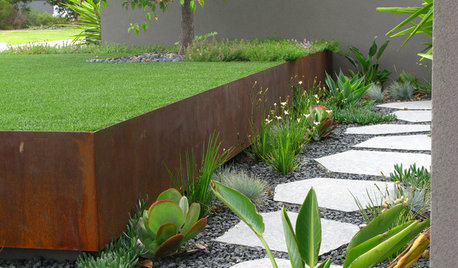feel silly for asking, but how to keep weeds out?
johndoug
17 years ago
Related Stories

GARDENING GUIDESLet's Weed Out 4 Native Plant Myths
Plant wisely for a garden that supports pollinators and requires less work
Full Story
ORGANIZINGPre-Storage Checklist: 10 Questions to Ask Yourself Before You Store
Wait, stop. Do you really need to keep that item you’re about to put into storage?
Full Story
WORKING WITH PROS9 Questions to Ask a Home Remodeler Before You Meet
Save time and effort by ruling out deal breakers with your contractor before an in-person session
Full Story
FUN HOUZZIn Praise of Silliness
These 16 distinctive spaces are seriously fun. See if any encourage your inner child to break free
Full Story
PETS10 Tips for Keeping Indoor Cats Healthy and Happy
It's National Cat Day: Ask not what your cat can do for you (because it will ignore you) but what you can do for your cat
Full Story
SELLING YOUR HOUSE15 Questions to Ask When Interviewing a Real Estate Agent
Here’s what you should find out before selecting an agent to sell your home
Full Story
GARDENING GUIDES5 Weed-Smothering Ground Covers
Let these landscape plants do the dirty work of choking out weeds while you sit back and enjoy the view
Full Story
LANDSCAPE DESIGN7 Questions to Ask Before Laying Stepping Stones
These broken-up pathways invite you to put a spring in your step — while adding functionality to the garden
Full Story
EDIBLE GARDENSNatural Ways to Get Rid of Weeds in Your Garden
Use these techniques to help prevent the spread of weeds and to learn about your soil
Full Story
GARDENING GUIDES5 Ways to Naturally Win the Weed War
Show irksome weeds no mercy with these tricks for combating them sans chemicals
Full StorySponsored
Central Ohio's Trusted Home Remodeler Specializing in Kitchens & Baths




togo4
gw:annie-lee
Related Discussions
What I thought was BS turns out 2 be sawflies, don't I feel silly
Q
How do I keep the neighbors weeds out of my yard?
Q
I feel silly for asking but is this slugs?
Q
Slightly OT - how do you keep your garden weed free ?
Q
bb
zintman
bejay9_10
ruthieg__tx
bejay9_10
forest_girl
gonefishin
gonefishin
gonefishin
gonefishin
bejay9_10
patty4150
robiniaquest
gonefishin
northspruce
mmqchdygg
chaman
gonefishin
ruthieg__tx
Violet_Z6
gonefishin
ruthieg__tx
daria
celestial
Violet_Z6